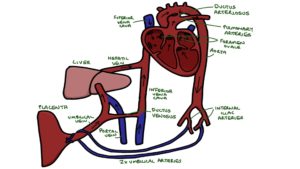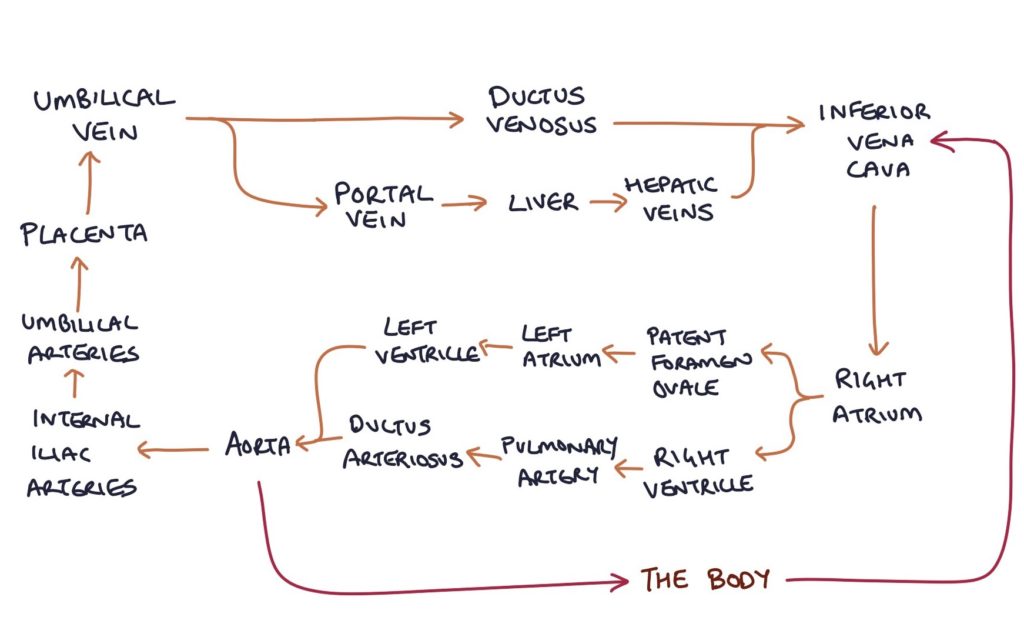It is really important to understand the fetal circulation. This will help you to understand the changes that happen in a baby at birth, the circulation of a newborn baby and the causes of murmurs in babies and young children.
Theory
In the fetus, blood needs to go via the placenta to collect oxygen and nutrients and to dispose of waste products such as carbon dioxide and lactate (via the mother). Therefore, there must be a way for blood to travel to the placenta and back. As the fetal lungs are not fully developed or functional, it does not make sense for the fetal blood to pass through the pulmonary circulation. Therefore there are three shunts that allow blood to bypass the lungs.
The 3 Fetal Shunts
Ductus venosus: This shunt connects the umbilical vein to the inferior vena cava and allows blood to bypass the liver.
Foramen ovale: This shunt connects the right atrium with the left atrium and allows blood to bypass the right ventricle and pulmonary circulation.
Ductus arteriosus. This shunt connects the pulmonary artery with the aorta and allows blood to bypass the pulmonary circulation.


At Birth
The first breaths the baby takes expands the alveoli, decreasing the pulmonary vascular resistance. The decrease in pulmonary vascular resistance causes a fall in pressure in the right atrium. At this point the left atrial pressure is greater than the right atrial pressure, which squashes the atrial septum to cause functional closure of the foramen ovale, similar to a closed valve with nothing flowing through it. This then gets sealed shut structurally after a few weeks and becomes the fossa ovalis.
Prostaglandins are required to keep the ductus arteriosus open. Increased blood oxygenation causes a drop in circulating prostaglandins. This causes closure of the ductus arteriosus, which becomes the ligamentum arteriosum.
Immediately after birth the ductus venosus stops functioning because the umbilical cord is clamped and there is no flow in the umbilical veins. The ductus venosus structurally closes a few days later and becomes the ligamentum venosum.
Last updated July 2019
